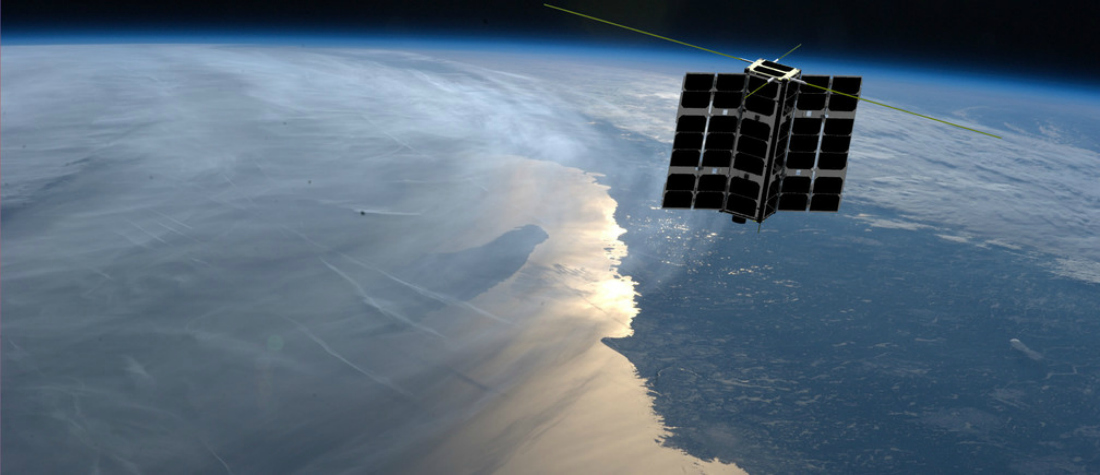
There is a space revolution happening today. It’s happening quietly, almost casually, but its impact will be profound. Small, cheap satellites have the power to change businesses and save lives.
The technology behind this revolution is the nanosatellite. Fleets of these bottle-sized satellites now orbit the earth, following leaps forward in terms of accessibility, capability, and affordability.
Traditional satellites typically cost several hundred million dollars, have a 10-year development cycle, and require a dedicated rocket. Nanosatellites, in comparison, cost less than a million dollars, have a 6-month development cycle (or less), and “ride along” as a secondary, standard payload on more than a dozen rockets around the world.
These new economics and timeframes mean that rather than relying on one satellite for a particular mission, a large number of nanosatellites operate together as a network, boosting resilience. The latest technology can be deployed through rapid upgrades, with the tiny satellites acting as a platform that can quickly react to the needs of its users. The near real-time coverage and exponentially improving data sensing capabilities of nanosatellites provide the potential to both improve life here on earth and follow in the tradition of an illustrious list of innovations.

Previous advances such as steam, electricity and internal combustion transformed households and firms, rippling through the whole economy and spawning further innovation.
From steam to genomes to satellites
More recently, the computer has enabled such innovations as payment processing by mobile phones and genome sequencing in healthcare, changing the way we live and positively impacting billions of people, especially in developing countries. Computing has moved from something that was initially a luxury to something that is now considered so important as to be labeled a Millennium Development Goal.
I believe the nanosatellite technology platform will have a similar far-reaching impact across all levels of society and the economy, bringing the benefit of space assets to everyone.

The world has entered into a new era of space innovation. Unlike in the Sixties, this one is being driven by inflows of private investment and the ability to leverage the innovations and improvements of the computer revolution.
This is not just a story of periodic, complex technology spin-offs, but the way people communicate every day. The applications and products based on a nanosatellite platform encompass such sweeping issues as supply chain visibility, agricultural mapping, weather and climate forecasting, border security, and communications.
In the same way that the personal computer brought computing power to the masses by making it smaller, simpler, and cheaper, nanosatellites bring space to the world by bringing down cost and increasing availability by orders of magnitude.

The ability of satellites to transform businesses and quality of life is significantly more relevant today than many people realise, and the enabling technology is doubling every year in terms of capability. In this context, power, bandwidth, and memory improvements translate into real-time data that can be analysed or communicated to serve a variety of needs. Today’s nanosatellite technology already allows us to find and stop fishing vessels using slave labor in the Java Sea, track airplanes and flight patterns to reduce fuel consumption, and monitor endangered species.
This is what nanosatellites will achieve in three years
In three years’ time, my expectation is that a nanosatellite platform will allow businesses and individuals to:
- Precisely manage the supply and distribution of renewable energy based on complex analysis involving remote monitoring of energy-generating assets, precise near and long-term weather forecasts, and hyper-local production.
- Provide every mobile phone user with a real-time, high-confidence alert of a pending typhoon days in advance to allow evacuation.
- Allow a mother in rural China to tell her son in Beijing that she is doing fine or needs help despite the lack of cellular coverage in her village.
As these examples demonstrate, the nature of space is changing from an industry in and of itself, to an enabling tool cutting across industries and across users – both government and consumer. And most crucially, emerging economies that have relied on the large-scale investments of a few space-faring countries can now access space and use it to further their national and environmental security, educate their population, and enhance their growth. Here are a few examples:
- Indonesian President Joko Widodo has said that 90% of foreign boats in Indonesian waters are illegal, causing huge economic losses. Overall, it is estimated that 85% of the global fish stock is threatened by illegal fishing. Vast oceans, covering 70% of our planet, are intractable to every monitoring device except satellites, which until now have not been economically viable for any nation except the wealthiest. My organization, Spire, is involved in efforts to solve this problem.
- Extreme weather events are increasing in frequency and unpredictability, and have caused death or suffering for over 4 billion people in the last two decades. Satellites account for 94% of the data used in weather forecasting, yet the current satellite and ground-based infrastructure continues to have gaps, especially in the Southern Hemisphere where many nations are disproportionately affected by severe weather.

Nanosatellite technology’s relative low cost and its launch availability make this the only technology that can provide resilient and near real-time global coverage, and a platform for connecting the unconnected parts of the world.
I am certain that the new democratization of space will have far-reaching impact on businesses and populations, and that nanosatellite platforms can be a positive tool in managing some of the biggest challenges of the new, Fourth Industrial Revolution.
This technology will allow businesses to better capture revenue and manage costs, participate in the Circular Economy through operational efficiencies, and contribute to supply chain visibility. It will also play a key role in providing the right kind of information to help global leaders make decisions and manage the most worrying risks, from extreme weather, to climate change, biodiversity loss, infrastructure breakdown, natural catastrophes and crises in the supply of food and water.